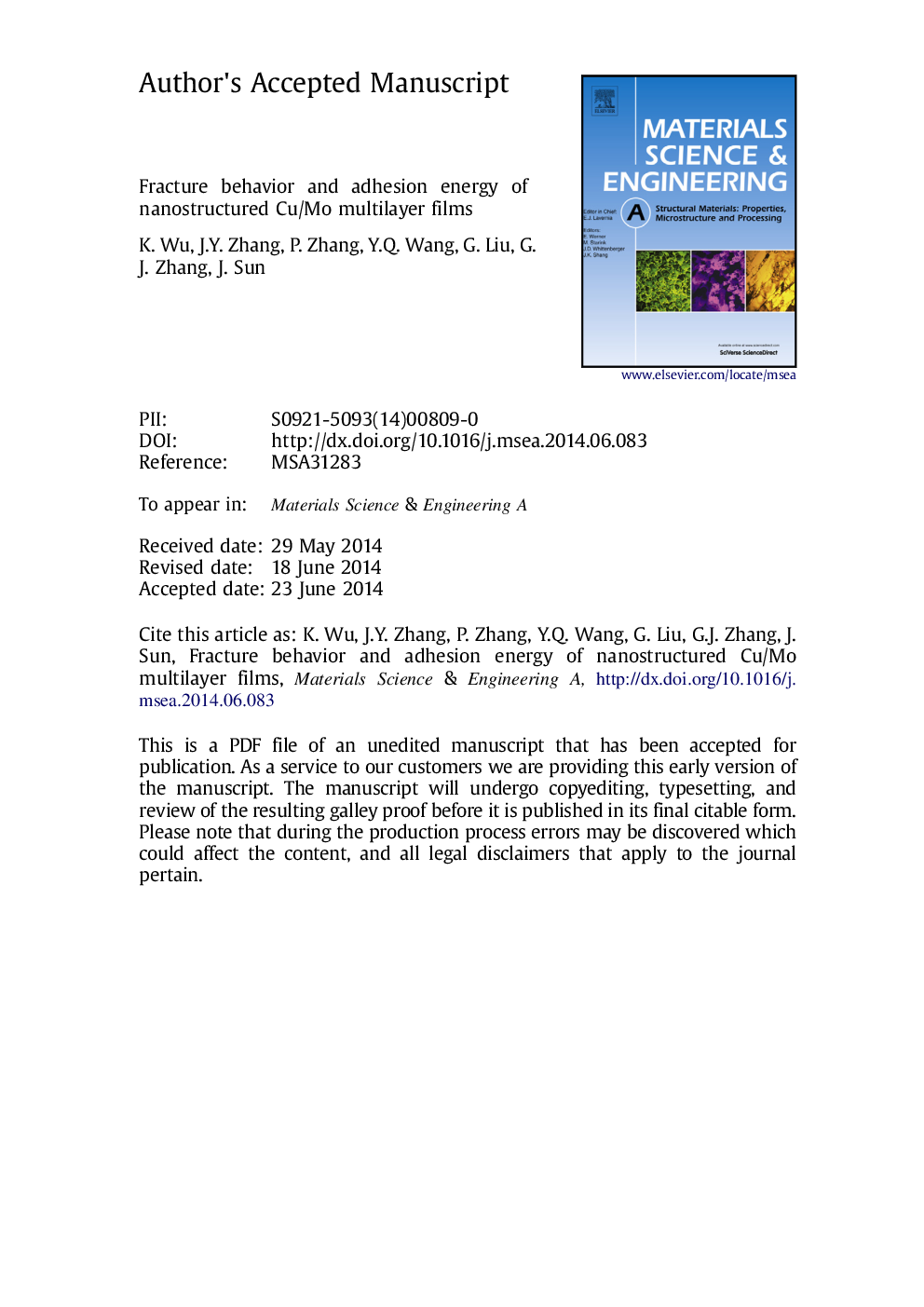| Article ID | Journal | Published Year | Pages | File Type |
|---|---|---|---|---|
| 7980390 | Materials Science and Engineering: A | 2014 | 21 Pages |
Abstract
The fracture behavior and interfacial adhesion of Cu/Mo nanostructured multilayer films (NMFs) are systematically investigated as a function of modulation period λ. A fracture mode transition from opening to shear has been reported as λ decreases from 250 nm to 10 nm, which is related to the constraining effect of ductile Cu layers on microcrack-initiating Mo layers. Within the λ regime below a critical size (λcri) of ~50 nm, a λ-independent adhesion energy of about 2.8 J mâ2 has been determined. Within the λ regime greater than λcri, however, the measured adhesion energy increases with increasing λ. The λ dependence of evaluated adhesion energy is discussed according to the size-dependent deformation mechanism. A micromechanics model has been utilized to quantify the λcri, where the deformation mechanism is transited from dislocation pileup to confined layer slip.
Keywords
Related Topics
Physical Sciences and Engineering
Materials Science
Materials Science (General)
Authors
K. Wu, J.Y. Zhang, P. Zhang, Y.Q. Wang, G. Liu, G.J. Zhang, J. Sun,
